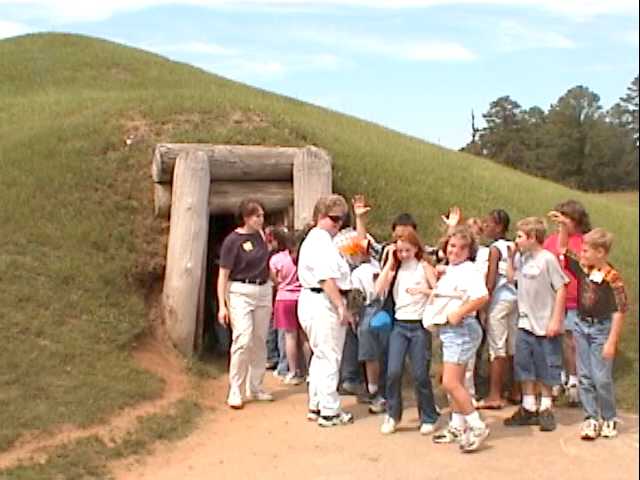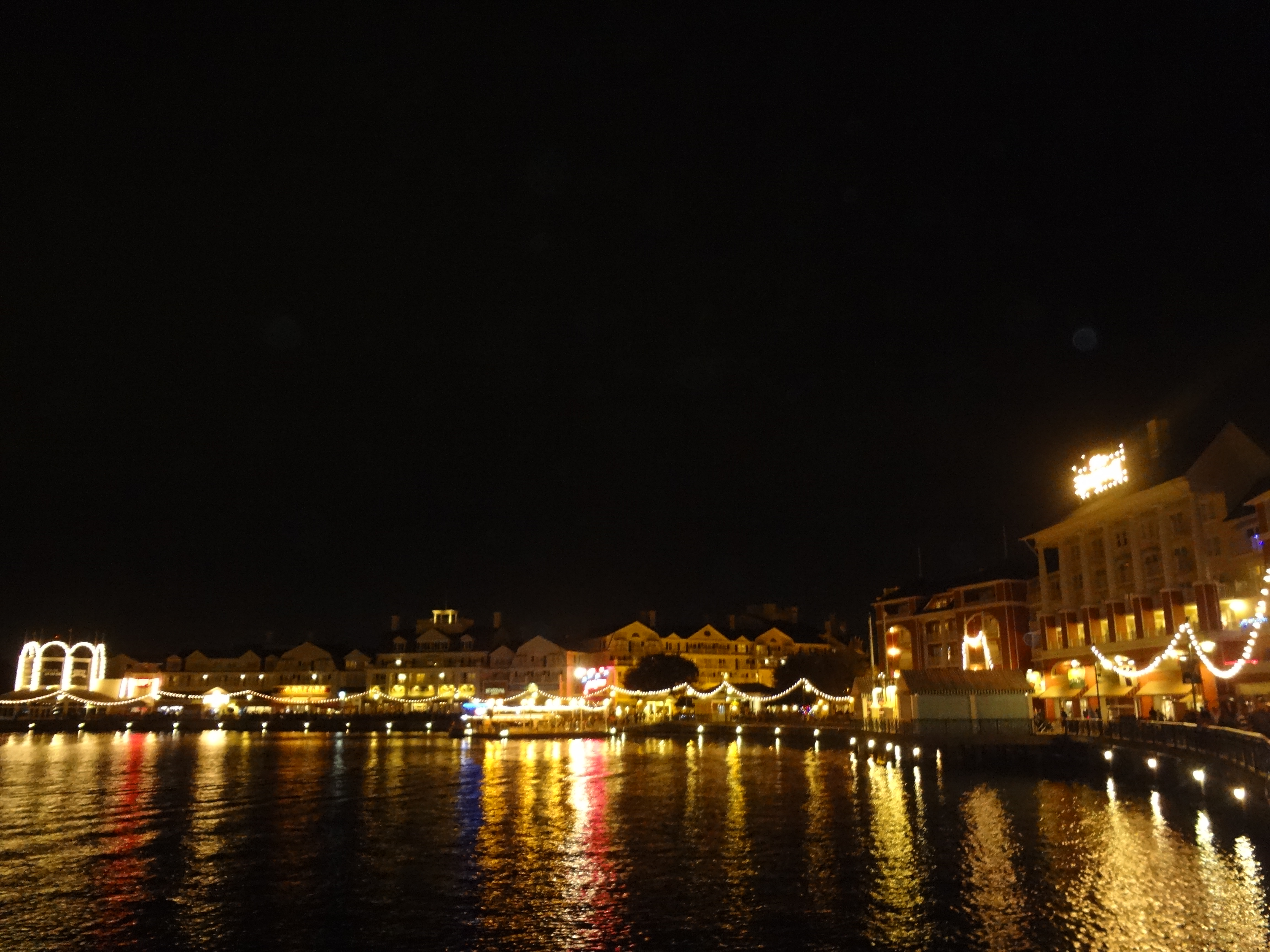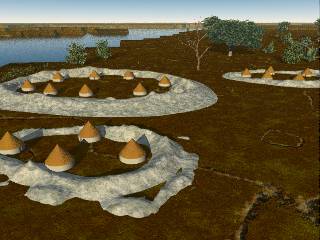Quest for Georgia’s Native Americans | Part 2: Macon, Georgia
 Around 900 AD, Native Americans in Georgia began constructing a series of towns consisting of enormous earthen pyramids. The largest of these pyramid sites include Ocmulgee and Etowah both believed to have been constructed by Creek Indians. This series of articles will take the reader on a quest to discover the origins of the people who built these great lost cities of Georgia. We will take a road trip to visit the actual locations where historical events took place and look for clues to help solve the mystery. Our first stop was in Savannah, Georgia where we learned about the Creek Migration Legend and from where these Indian tribes believed they came. Our next stop is at the Ocmulgee Mounds site itself to look for more clues.
Around 900 AD, Native Americans in Georgia began constructing a series of towns consisting of enormous earthen pyramids. The largest of these pyramid sites include Ocmulgee and Etowah both believed to have been constructed by Creek Indians. This series of articles will take the reader on a quest to discover the origins of the people who built these great lost cities of Georgia. We will take a road trip to visit the actual locations where historical events took place and look for clues to help solve the mystery. Our first stop was in Savannah, Georgia where we learned about the Creek Migration Legend and from where these Indian tribes believed they came. Our next stop is at the Ocmulgee Mounds site itself to look for more clues.
Second Stop- Macon, Georgia
As we leave Savannah, Georgia we head west on I-16 for a three hour drive to Macon, Georgia, to visit the Ocmulgee National Monument, the next stop on our quest to discover the origins of Georgia’s Creek Indian moundbuilders. The Ocmulgee National Monument was established in 1936 by President Roosevelt to preserve the enormous Indian mounds located at the site. These mounds include the Greater Temple Mound, the Lesser Temple Mound (both arranged around a central plaza), the Funeral Mound and the Earth Lodge.
There are two seemingly contradictory traditions among the Creek Indians about the original inhabitants of the site. The Hitchiti Creek Indians claim they were the original inhabitants of the site. The Muskogee Creek Indians claim this was the site where they “first sat down” after their long migration from the west, as discussed in the Creek Migration Legend discussed in Part 1. Yet in this same legend the Muskogee Creek Indians admit that the Hitchiti Creek Indians were already in Georgia when they arrived. Thus what is the real truth?
Ocmulgee National Monument Museum
Our first stop at the Ocmulgee National Monument is the museum and here is where we find out first clue. The museum exhibit shows the first pottery that was found at the site. This pottery is named Swift Creek by archaeologists, first discovered at a site just down the road from Ocmulgee near a creek called, what else, Swift Creek (thus the name.) This pottery is characterized by intricate designs stamped into its clay surface while still wet. Swift Creek pottery is found throughout Georgia and Florida and dates back to 200 AD. It appears in many of the same places where the Hitchiti Creek Indians once lived thus it is likely associated with this Indian tribe.
But around 900 AD a completely new type of pottery shows up at Ocmulgee Mounds. This pottery, called Bibb Plain by archaeologists, is completely undecorated and includes features such as shouldered bowls that were absent from the Swift Creek pottery. The exhibit also shows how completely new arrowhead designs showed up at this same time period. The park ranger also mentions that he previously worked out west at the Chaco Canyon site and this new pottery looked identical to the pottery from the Native American sites out west. The park ranger also mentioned that the technology of shouldered bowls was a desert technology since shouldered bowls cause water to bounce back into the pot instead of bouncing out, an important feature when one has to walk long distances to gather water.
The Clues
So, a quick recap of the clues thus far:
- New pottery and arrowheads showed up at Ocmulgee Mounds around 900 AD
- These artifacts were unlike those of the local Indian tribes but very similar to those from the western United States.
- In Part 1 of this series, we learned that the Creek Migration Legend noted that they migrated from the west and
- Their western homeland experienced serious earthquakes and had active volcanoes.
- Muskogee Creek Indian tribal traditions state that Ocmulgee Mounds was the place where they “first sat down” after their long migration from the west.
The preceding evidence does seem to suggest the Hitchiti Creek Indians were in Georgia hundreds of years before the Muskogee Creek Indians arrived. But this still doesn’t tell us who built the Indian mounds. A picture is emerging but there are still many questions remaining thus our quest continues.
The Ocmulgee Earth Lodge
As we leave the museum to tour the site, the first structure we come to is the Earth Lodge. From a distance this structure simply looks like a mound. As we slowly walk uphill towards the Earth Lodge it becomes clear that this “mound” has a tunnel-like entrance. We have to crouch to walk through this short “tunnel” before entering the central chamber of the “mound” where we can once again stand fully erect.
The central chamber is a circular structure with four large posts that support the roof. There are 47 low seats arranged around the floor against the outer wall. A raised clay platform in the shape of a bird is located front and center and includes three more seats bringing the total to 50. Obviously these three seats were reserved for three very important persons.
This structure is another clue in our quest for Georgia’s Native Americans. Another version of the Creek Migration Legend recorded in May 1912 states:
“By and by the Kasihta, who were still in advance, crossed a river smaller than the first. On the other side they raised a mound, leaving a great chamber in the center in which to fast and purify their bodies.”
This “mound [with] a great chamber in the center” is a perfect description of the Ocmulgee Earth Lodge. It should be noted that the Earth Lodge was not discovered by archaeologists until 1938, twenty-six years after this version of the Creek Migration Legend was first recorded. Thus either the original informant was psychic and knew what would be discovered 26 years later or this discovery offers confirmation for the accuracy of this version of the Creek migration legend.
It should also be noted that the Ocmulgee Earth Lodge is similar to both the earth lodges in the Midwest and the round, semi-subterranean kivas or ceremonial buildings located out west at such places as Chaco Canyon. Is this further evidence that the Muskogee Creek Indians originated in the western U.S.? Another Muskogee tribe that claims to have migrated with the Kasihta state in their migration legend:
“The place from which they started they call Il’afoni, ‘the backbone,’ and they identify this with the Rocky Mountains.”
Thus multiple lines of evidence seem to place the origins of Georgia’s Creek Indians as far away as Chaco Canyon and the Rocky Mountains. But could Georgia’s Creek Indians have originated as far away as west Mexico? We will continue to explore the Ocmulgee Mounds site in Part 3 of this series and see what further clues we can find about the origins of Georgia’s Native Americans.
There are two final clues that we can gather from the Earth Lodge. First, the bird-shaped platform has a symbol around its eye known by archaeologists as the “weeping eye” symbol. This symbol can also be found on artifacts as far west as the Cahokia Mounds site near St. Louis, Missouri.
Second, when the Earth Lodge was excavated the archaeologists realized the structure had been burned and it collapsed. Luckily for archaeologists they could radiocarbon date this charcoal and find out when this structure had burned. Their test results showed that this structure had burned around 1019 AD. Thus we now know that the Muskogee Creek Indians had arrived at the Ocmulgee Mounds site by at least 1019 AD.
As stated in Part 1 of this series, the Creek Migration Legend states that they left their original homeland due to earthquake and volcanic activity. Since the Muskogee Creek Indians were already at Ocmulgee by 1019 AD we must find a volcanic eruption before this date. Thus we now know both where to look (western U.S. and Mexico) and when to look (before 1019 AD).
We will continue our exploration of the Ocmulgee Mounds site in Part 3 where we’ll look for clues in the Funeral Mound.



